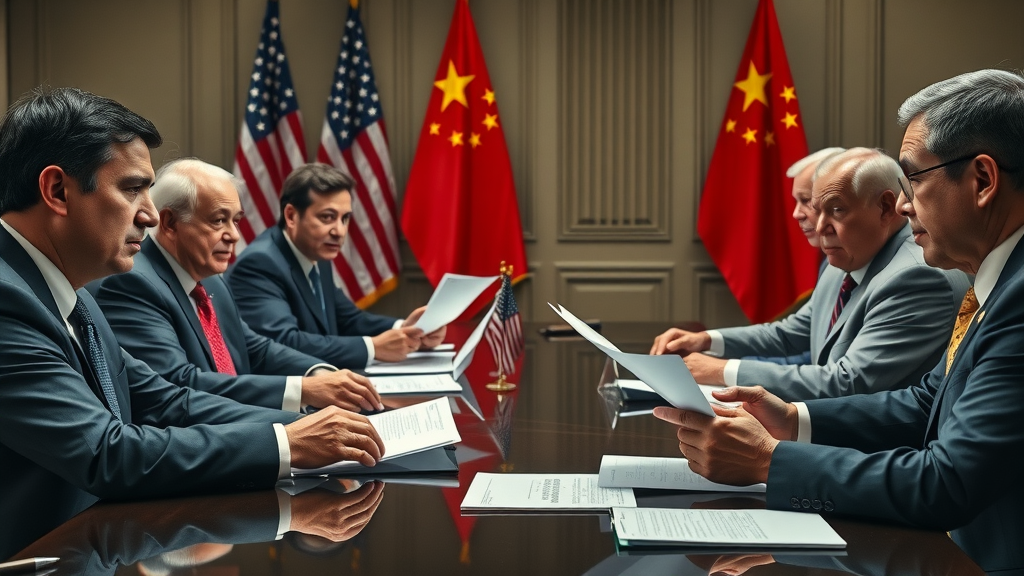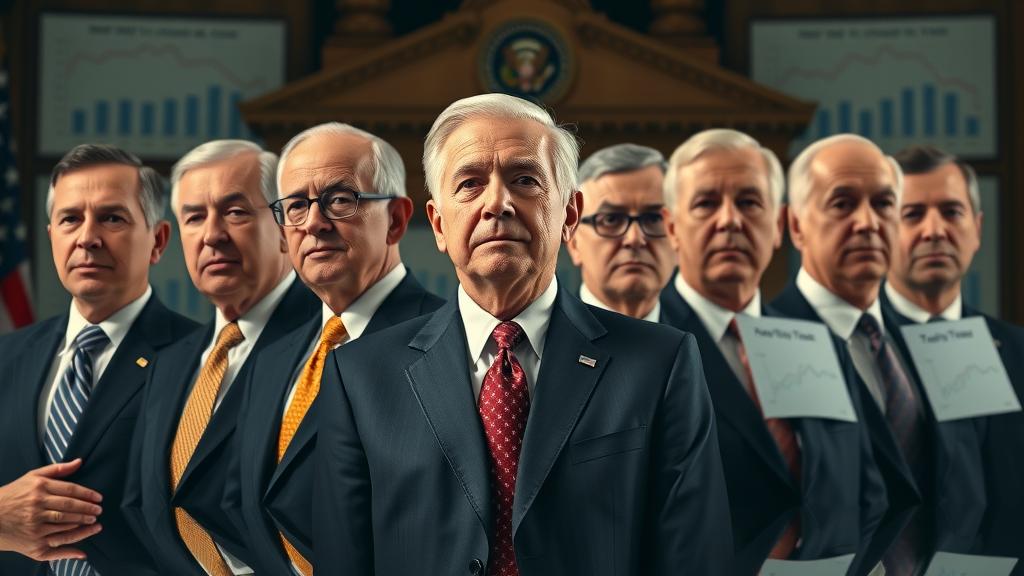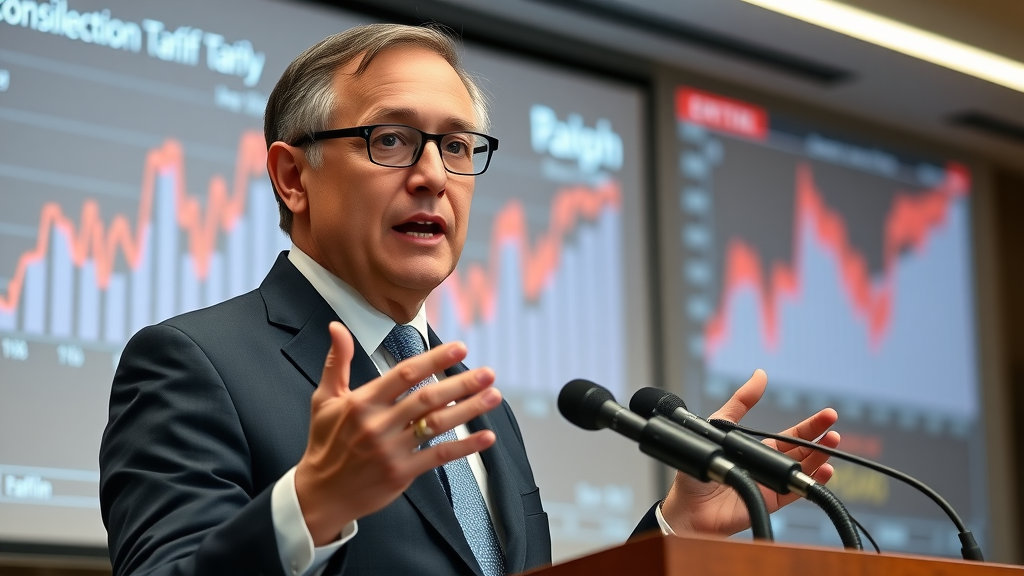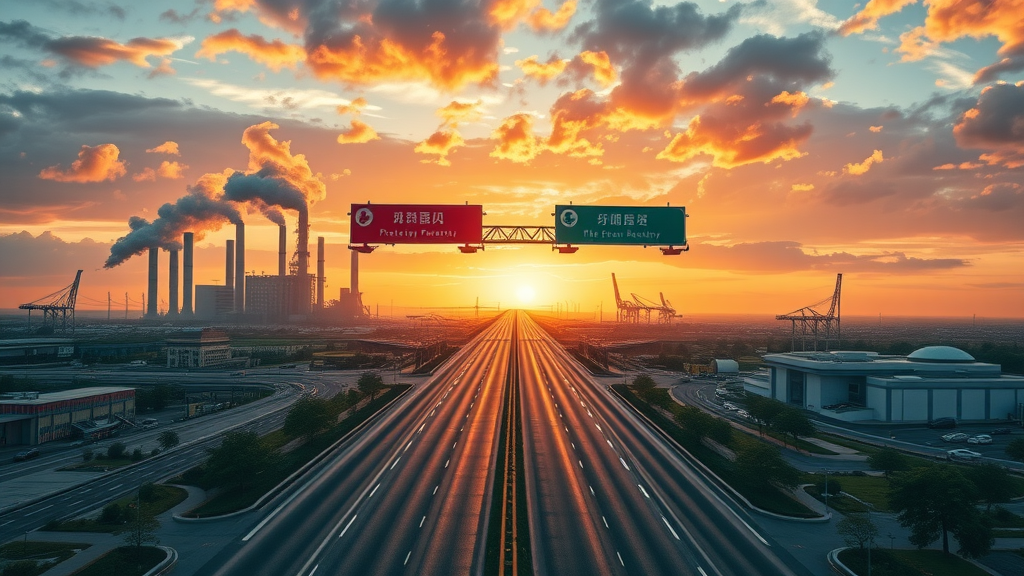Did you know that a mere 1% increase in the U.S. tariff rate could trigger a jump of up to 0.3% in price levels across the country? While politicians tout tariffs as economic protection, most Americans don't realize these policy levers may quietly be inflating the cost of their morning coffee, smartphones, and cars. The relationship between tariffs and inflation isn't just theory—it's playing out in supermarkets and paychecks right now. Let's dive deep into how these policies shape the financial reality for all Americans, and why understanding them is more urgent than ever.

A Surprising Connection: Tariffs and Inflation by the Numbers
Most people think of tariffs only when politicians announce a new round of trade tensions or a landmark trade deal, but the hidden connection between tariffs and inflation runs much deeper. Higher tariffs directly increase the cost of imported goods —from steel and electronics to food and clothing. What’s surprising is just how quickly these increases ripple through the broader economy. Historical research and recent White House briefings underscore that even a single percentage point hike in the average tariff rate can lift U.S. consumer prices by a measurable percentage. This linkage is often underestimated by the public, but the lived experience—prices rose faster for everyday goods following tariff actions in recent years—proves that the burden is real and often inescapable.
For most U.S. households and businesses, tariff costs feel invisible at the checkout—until prices for everything from cars to breakfast cereal climb. Add in complex global supply chains, and you have a recipe for broad-based side effects that intensify inflation, complicate Federal Reserve policy, and ultimately impact the American standard of living. The impact of tariffs shouldn’t be dismissed as esoteric policy talk; it’s an everyday pocketbook issue.
Why a 1% Tariff Hike Can Lead to a 0.3% Surge in U.S. Price Levels
Here’s where the math gets eye opening: According to detailed consumer price index analyses, a 1% increase in the average tariff rate often correlates with a 0.3% increase in the personal consumption expenditure price index . This means if the White House increases tariffs as a strategic lever in a trade dispute, those higher tariff costs are distributed across a wide swath of imported goods, ultimately inflating consumer prices and contributing to underlying inflation pressures tracked by the Federal Reserve.
Though some businesses may initially try to absorb costs to keep customer loyalty, the reality is that most significant and sustained increases in tariff rates end up being passed on. As the supply chain adjusts, markup at each stage—from importer to wholesaler to retailer—results in a compounded price increase, felt most acutely by households with tight budgets. Beyond the headline inflation number, these movements shift the underlying cost structure for everything from basic necessities to big-ticket purchases.
For a closer look at how specific tariff policies—particularly those enacted during the Trump administration—have directly influenced inflation and business decision-making, you may find it useful to review this analysis on the impact of Trump tariffs on inflation and employment goals . It offers tactical insights into the real-world effects businesses have faced in recent years.
"Many Americans are unaware that trade policy can quietly raise their everyday costs faster than they realize."

What You'll Learn: Unpacking the Ties Between Tariffs and Inflation
- Core concepts of tariffs and inflation
- Direct and indirect impacts of tariff policies
- How the Federal Reserve factors into the equation
- Historical evidence from past and present administrations
- Expert opinions on policy effectiveness and consumer outcomes
Understanding Tariffs and Inflation: Basic Definitions and Relevance
Tariffs are government-imposed taxes on imported goods —whether they come as a percentage of value or a per-unit charge. On the surface, they seem a straightforward trade policy tool. But in the complex web of the U.S. and world economy, tariffs can create a chain reaction that goes well beyond boosting government revenue or protecting domestic industries.
Inflation is the general increase in prices over time, commonly measured by indices like the consumer price index or the personal consumption expenditure price index . When tariffs are hiked, imported goods become more expensive, and the effects cascade: U.S. competitors often match price hikes to stay profitable, and consumers see personal consumption expenditures rise—even on items made locally, due to intertwined supply chains. This is how average tariff changes can alter the inflation rate and personal bottom lines in the United States.

Clarifying What 'Tariff Rate' Really Means for Households and Businesses
When we talk about the “average tariff rate,” it’s easy to imagine a number that matters only to international traders. Yet, for households and businesses in the United States , this seemingly small figure holds enormous weight. Every 1% change in the tariff rate shifts the competitive landscape—granting a temporary edge to U.S. producers but also inevitably increasing costs on a wide set of goods. Higher tariffs can quickly erode the purchasing power of average families, while small businesses face “sticky” input cost hikes that squeeze profit margins and trigger tough pricing choices.
For large companies with global supply chains, rapid changes in average tariff rates disrupt contractual relationships, investment plans, and even hiring decisions. Meanwhile, smaller American manufacturers that rely on imported components—like electronics, auto parts, or specialty metals—may find profit margins narrowing or vanishing as key input prices rise. In the end, both sides of Main Street America feel the pinch, as trade policy actions echo across sectors, from retail shelves to industrial supply lines.
The Inflation Equation: How Tariff Costs Ripple Through the Economy
Tariffs are not just a tax—they are a multiplier. When the government enacts a tariff, importers must pay more at the border, and those higher costs rarely end there. Instead, with each link of the supply chain—from overseas manufacturer to U.S. distributor to local store—there is a pass-through effect. Prices rise incrementally at each step , and as businesses seek to protect already thin margins, they routinely opt to pass the burden to the consumer.
A single tariff rate hike—especially on crucial inputs like steel or semiconductors—can push up production costs for everything from cars to appliances. By the time the product reaches the end consumer, the compounded effect can make even a modest tariff look significant on the receipt, thus feeding into the larger cycles of inflation monitored by policymakers at the Federal Reserve and the White House.

Historic Shifts: The Impact of Tariffs on the United States Economy
The impact of tariffs has evolved alongside major shifts in international trade and domestic economic policy. In recent history, tariff actions—especially under the Trump administration—have acted as a “shock test” for the modern U.S. economy. When tariffs on goods from China surged during the recent trade war, consumer price indexes ticked upward as direct and indirect effects spread across virtually every sector.
Over time, U.S. administrations have taken distinct approaches—some opting for broad, aggressive tariff increases to promote national interests, others turning to negotiation and targeted reductions to lower prices and minimize inflation. The debate continues in the White House and beyond: Do tariffs truly protect jobs and national security, or do they deliver a hidden “tax” on families and businesses by pushing up consumer prices?
A Look Back: Tariffs, President Trump, and the Trade War with China
President Trump changed the global trade equation overnight with steep tariffs on goods from China. These actions, often framed as a tactic for leverage in difficult trade policy talks, spurred tit-for-tat escalation and injected volatility into markets. The result? U.S. businesses paying more for imports, higher tariff costs filtering through supply chains, and consumer price indexes moving up by several percentage points.
The trade war rhetoric—a “trade war is good and easy to win”—brought attention to the power of tariffs, but also exposed the broader costs. While some industries benefited from reduced foreign competition, others, especially those dependent on global supply chains, faced rising production costs and tough choices about whether to pass these hikes onto everyday Americans.

"Trade wars are good and easy to win. But at what cost to American families?"
Comparing Past White House Approaches to Tariffs and Inflation
From the Clinton years to the Bush administration, then to Obama and Trump, the White House approach to tariffs and inflation has swung like a pendulum. Some presidents let the average tariff rate drift lower to encourage global trade and promote consumer price stability, while others—most notably during times of crisis or perceived unfair trade practices—increased tariff rates to shield strategic industries.
Each approach leaves a legacy in the personal consumption expenditure data. For example, the Trump administration’s spike in tariffs on hundreds of billions in imports led to a series of price increases in the United States, compelling the Federal Reserve to consider monetary countermeasures. Conversely, efforts to negotiate trade deals or reduce tariffs have often been associated with slower inflation growth, but may spark political backlash if domestic jobs are lost.

| Year/Administration | Notable Tariff Policy | Average Tariff Rate (%) | PCE Price Index Change (%) |
|---|---|---|---|
| 2001-2008 Bush |
Steel tariffs (temporary) | 1.5 | ~2.2 annually |
| 2009-2016 Obama |
Tire tariffs, WTO engagement | ~1.3 | ~1.5-2.0 annually |
| 2017-2020 Trump |
Tariffs on $350B+ goods from China, steel/aluminum | 2.0 - 2.9 | Up to 2.4 in 2018-2019 |
| 2021-2023 Biden |
Selective removals/maintained Trump tariffs | 2.7 | 2.5 - 6.0 (pandemic recovery effect) |
Tariff Costs: The True Burden on U.S. Consumers and Businesses
Beyond abstract statistics, tariff costs manifest in very real ways for American families and business owners. Unlike visible taxes, the “tariff tax” comes in the form of price tags that edge ever higher with each passing quarter. The impact of tariffs stretches from factory floors that import specialized components, to grocery store aisles where the cost of goods reflects a long and convoluted global journey.
Countless studies now confirm a broad pattern: when tariff rates go up, consumer prices soon follow in industries most exposed to international supply chains. Businesses unable to “eat” the cost must raise prices or risk going under, while households adjust spending as personal consumption expenditures rise. In the end, the hidden burden of tariffs is substantial, especially for lower and middle-income families already feeling the pinch from surging inflation rates.
Hidden Price Hikes: When Tariff Rate Changes Hit American Wallets
Many Americans are surprised when a routine grocery trip or a stop at the electronics store reveals substantial price increases. That shock is often the direct result of a recent boost in the average tariff rate. Retailers, squeezed by upstream tariffs on the products they sell, have no choice but to increase shelf prices. Even when businesses try to shield customers, the margins quickly become unsustainable as costs percolate throughout each stage of the supply process.
Policymakers may debate the importance of trade policy in the halls of power, but for those at the checkout, the effect is immediate and personal. Ultimately, higher tariffs serve as a hidden sales tax, diminishing the buying power of every dollar and tilting the economic playing field in unpredictable ways.

Supply Chains, Import Prices, and the Domino Effect of Tariffs and Inflation
The supply chain ramifications of tariffs reach far beyond the initial cost of an imported good. For example, higher tariffs on steel or electronics create a domino effect: U.S. manufacturers pay more for critical components, resulting in costlier finished products for consumers. This “pass-through” of costs is amplified as each link of the chain adds its own margin, culminating in increased end-user prices and contributing directly to inflation across multiple sectors.
- Price increases in critical imports (steel, electronics, vehicles)
- Pass-through effects on consumer goods
- Challenges for U.S. manufacturers
These ripple effects are particularly tough on industries reliant on complex overseas supply networks. Choices between absorbing higher costs, relocating supply, or hiking prices can make or break small businesses, trigger layoffs, or result in lost market share—all of which reverberate through the wider economy in the form of slower growth and persistent inflation.
International Lessons: How Other Countries Respond to Tariffs and Inflation
The United States is hardly alone in struggling with the realities of tariffs and inflation. Around the world, governments face similar dilemmas—should they impose countertariffs , adjust monetary policy, or seek new trade deals to manage inflation? Europe, Canada, and Asian economies have all responded with a mix of defensive and proactive strategies aimed at minimizing the impact of tariffs on their own consumer bases while keeping their industries globally competitive.
The lesson is clear: strategic, flexible responses matter. Rigid reliance on escalating tariffs can backfire, fueling the very price increases central banks hope to control. Many countries now coordinate monetary policy and trade negotiations to reduce collateral damage to households and businesses, highlighting the need for nuance in tackling the links between global trade and local inflation.
Global Strategies: Countertariffs and Monetary Policy Responses
When the United States raises tariffs, affected trading partners often retaliate—whether through direct countertariffs on American goods or adjustments to their own monetary policies (such as central bank rate cuts). These moves are aimed at leveling the playing field, but can prolong global uncertainty and complicate domestic inflation-fighting efforts.
While countertariffs seek to punish the instigating country, they inevitably increase costs for domestic consumers and the world supply chain. Conversely, some nations deploy targeted stimulus or interest rate changes to cushion inflation spikes—but these actions cannot override the basic math of higher tariffs feeding through to consumer prices.

| Country | Recent Tariff Action | Inflation Response | Monetary or Fiscal Moves |
|---|---|---|---|
| United States | Tariffs on China, steel, aluminum (2018-19) | Core inflation rose 0.3-0.4% above trend | Fed rate cuts in late 2019 |
| China | Retaliatory tariffs on U.S. agriculture, autos | Producer costs up, consumer prices rose | Yuan devaluation, industry subsidies |
| European Union | Tariffs on select U.S. goods (counter) | Minor inflation impact | Targeted aid to affected sectors |
| Canada | Tariffs on U.S. steel, aluminum | Industrial prices rose, consumer impact moderate | Interest rate hold, sectoral support |
The Federal Reserve Reaction: Rate Cuts, Monetary Policy, and the Tariff-Inflation Cycle
The Federal Reserve acts as the first line of defense against inflation. When tariffs begin to heat up the consumer price index , the Fed may attempt to counteract the effect with rate cuts or other tools . However, this is no simple fix—the root cause of tariff-driven inflation lies outside the central bank’s reach, particularly when tariffs are used as long-term policy.
The reality: The Fed cannot fully offset the structural pressures caused by persistent or rising tariff rates. Monetary easing delivers temporary relief but may fuel asset bubbles or undermine currency strength if overused, especially in a prolonged trade war environment.
Role of the Federal Reserve in Dampening Tariff-Driven Inflation
When the Federal Reserve sees inflation spike following tariff actions, its main countermeasure is to lower the federal funds rate—or in headline terms, implement a “rate cut.” This has the dual effect of encouraging borrowing and spending while offsetting higher costs from tariffs on imported goods. Notably, after the Trump administration's tariff spree, the Fed cut interest rates three times in 2019 to help the economy absorb the resulting shocks.
Nonetheless, interest rate adjustments can only go so far. When average tariff rates remain elevated, or trade policy uncertainty persists, the effect of monetary policy—whether via rate cuts or unconventional tools—proves limited. The underlying price index still reflects higher input costs unless tariffs are reversed or offset with successful trade deals.

When Rate Cuts Aren’t Enough: Limits of Monetary Policy
There’s only so much the Federal Reserve can accomplish in the face of relentless tariff hikes. Monetary policy moves (like a rate cut) help in the short run by cushioning demand, but do not fix structural price shocks from sustained hikes in average tariff rates. Many economists argue that relying too heavily on central banks merely postpones the pain, eventually leading to higher general inflation without resolving the damage to supply chains and business competitiveness.
"Monetary policy can offset shocks, but it cannot reverse the damage done by persistent trade barriers." — Economist, 2023
Presidential Policy: How U.S. Leaders Influence Tariffs and Inflation
The tariff-inflation dance is fundamentally shaped by presidential decision-making. Whether it’s President Trump’s aggressive use of tariffs as negotiating leverage, or the Biden administration’s selective rollback and re-targeting, the White House has the power to set the tempo in both trade policy and price stability. Each administration’s approach to tariff rates leaves a mark on personal consumption expenditures and the wider price index.
Case Study: President Trump’s Tariff Playbook and Its Lasting Legacy
The Trump administration put tariffs at the center of its trade playbook, dramatically raising average tariff rates on imports from China and elsewhere while framing these moves as critical for jobs and national security. This approach delivered political wins but also contributed to pronounced inflationary effects, which even aggressive Federal Reserve rate cuts couldn’t fully neutralize. The impact of tariffs introduced during this period has echoed into future administrations’ economic strategies, setting a new normal for trade policy risk and inflation management.
Reviewing the Biden Administration and White House Trade Shifts
The current White House team has taken a more measured stance—choosing to keep some Trump-era tariffs in place, while selectively adjusting others in response to supply chain disruptions and rising consumer price levels during the pandemic recovery. This strategy highlights the ongoing balance between protecting key U.S. industries, securing critical supplies, and keeping inflation from eroding workers’ paychecks.
- Emergency tariffs during trade disputes
- Long-term tariff plans for strategic industries
- Policy reversals and their impact on inflation
Expert Opinions: Decoding the Real Impact of Tariffs and Inflation
Broadly, economists agree that tariffs act as an inflation accelerator in economies where households and firms rely on global supply chains. Still, a handful of contrarian experts suggest that short-term tariffs can provide relief if, for example, global markets are pushing down domestic prices too quickly, or if managed with laser precision to avoid key imports essential for consumption.
Leading Economists on the Long-term Dangers of Higher Tariff Rates
The consensus view among most leading economists is clear: Higher tariff rates have a compounding effect on the cost of goods and personal consumption expenditure. Over time, these costs are baked into the economy’s structure, causing wages to lag behind rising prices and making it harder for the Federal Reserve to maintain price stability.

Contrarian Voices: When Tariffs May Actually Help Domestic Inflation
Not all experts are opposed to selective or tactical tariffs—some argue they can help domestic industry if deployed surgically, or prevent deflation by cushioning excessively cheap imports. However, most caution that this window of benefit is vanishingly narrow, and that broad, prolonged tariffs are more likely to stoke consumer price increases than solve them.
People Also Ask
How do tariffs lead to inflation in the United States?
Tariffs increase the cost of imported goods. Domestic producers often follow by raising prices, since they face less competition. This cycle feeds directly into the inflation data tracked by the Federal Reserve, with widespread price increases especially for goods with complex supply chains or critical imports.
Are all tariff increases passed on to consumers through higher prices?
Not always. Some businesses absorb smaller tariff increases by accepting lower profits, changing suppliers, or making efficiency improvements. But when tariff hikes are large or lasting, most cost increases end up being reflected in consumer prices —as seen in the past several years in U.S. retail.
What role does the Federal Reserve play when tariffs increase inflation?
The Federal Reserve can lower interest rates or use other monetary tools to counter the inflationary impact of tariffs. However, monetary policy alone cannot offset the persistent, structural price changes caused by entrenched or widespread trade barriers.
FAQs on Tariffs and Inflation: Addressing Public Concerns
- Do all tariffs drive inflation equally across sectors? — No; tariffs on critical imports like industrial metals or electronics typically have a bigger ripple effect, while tariffs on niche products may have less visible impact.
- Can removing a tariff decrease inflation quickly? — Sometimes, but not always. If supply chains have already shifted or price levels have reset, dropping tariffs won't always bring immediate relief.
- Are retaliatory tariffs as inflationary as domestic ones? — They can be, especially if they target key U.S. exports or force companies to absorb new costs.
- What indicators suggest tariffs are affecting U.S. price levels? — Look for sharper increases in the personal consumption expenditure index, the consumer price index , and tracking of sector-specific price hikes after tariff announcements.
- How can households and businesses protect against tariff-driven inflation? — Diversify suppliers, seek contracts with cost adjustment clauses, and watch for shifting trade policy signals in Washington and global markets.
Key Takeaways: The Complex Web of Tariffs and Inflation
- Tariffs and inflation are deeply linked by supply chain costs and consumer prices.
- Federal Reserve policy can only do so much to counteract inflation from tariffs.
- Presidential action remains crucial in shaping the tariff-inflation dynamic.
- Expert consensus leans toward tariffs raising inflation, but exceptions exist.
Is Change Possible? Exploring Solutions and Future Scenarios for U.S. Tariff Policy and Inflation
"As global supply chains evolve, U.S. policymakers face a fork in the road: protect key industries, or ensure consumer price stability?"

Policymakers have choices to make. They might recalibrate tariff rates toward essentials, negotiate future trade deals with inflation triggers in mind, or invest in supply chain resilience. The path forward will require open debate, ongoing review—which is why your perspective matters.
Share Your Perspective on Tariffs and Inflation
Have insights to share on global trade? Let's talk—call us at 203-271-7991 to explore contributing an article.
Watch: Former Federal Reserve Chair Discusses Tariff Impacts on Rates and Inflation
Actionable Conclusion: Pay attention to trade policy news, monitor price trends in your industry or shopping basket, and let your representatives know how tariff decisions impact your world. Staying informed is your best line of defense.
If you’re interested in expanding your understanding of how tariffs and inflation shape the broader U.S. economy, consider exploring this in-depth overview of the economic consequences of recent tariff policies . It delves into the strategic and long-term effects that trade decisions have on growth, employment, and price stability. By connecting the dots between policy, business, and consumer impact, you’ll gain a more holistic perspective on the challenges and opportunities ahead. Whether you’re a business leader, policymaker, or an informed consumer, these insights can help you anticipate shifts and make smarter decisions in a rapidly evolving global landscape.
The intricate relationship between tariffs and inflation has been a focal point in recent economic discussions. Federal Reserve Chair Jerome Powell highlighted that President Trump’s tariffs are “highly likely” to generate at least a temporary rise in inflation, potentially leading to higher consumer prices and slower economic growth. ( axios.com ) Similarly, a report by Citigroup emphasizes that tariffs act as a stagflationary shock for the U.S., pushing up import prices and subsequently increasing consumer goods prices, which can drag on economic growth. ( citigroup.com ) Understanding these dynamics is crucial for grasping how trade policies directly impact the economy and consumer costs.
 Add Row
Add Row  Add
Add 




Write A Comment